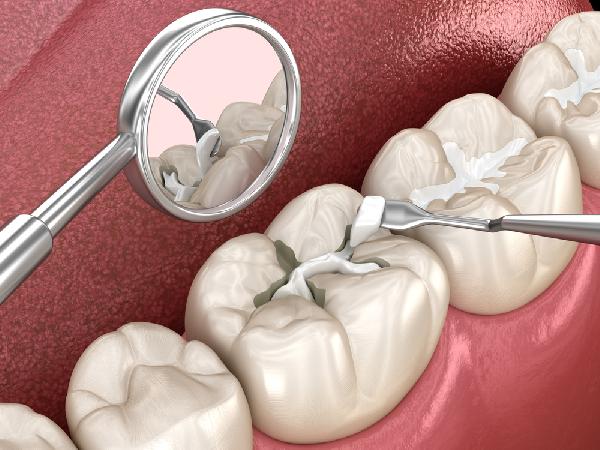What Factors Influence The Cost of Dental Fillings? Dental health is an integral component of overall well-being, and when cavities strike, dental fillings become a crucial solution. While the necessity of dental fillings is widely understood, the cost associated with these procedures can vary significantly. This article explores the myriad factors that influence the cost of dental fillings, with a specific focus on front tooth filling procedures.
Type of Filling Material
One of the primary determinants of the cost of dental fillings is the type of filling material used. Different materials, such as amalgam, composite resin, gold, and porcelain, come with distinct price tags. Amalgam, a mixture of metals, tends to be more cost-effective compared to tooth-colored composite resin, which is aesthetically pleasing but relatively more expensive.
Location and Geographic Variation
Geographical location plays a pivotal role in determining dental filling cost. Dental care expenses can vary widely from one region to another. Urban areas, where the cost of living is generally higher, often witness elevated dental service costs compared to rural or less populated areas. Additionally, local economic factors and competition among dental practices can influence pricing.
Dentist’s Expertise and Reputation
The skill and reputation of the dentist performing the filling procedure contribute significantly to the overall cost. Highly experienced and reputable dentists may charge higher fees for their services. Patients often perceive the expertise of the dentist as an investment in quality and precision, particularly when dealing with visible areas like front tooth fillings.
Extent of Tooth Damage
The extent of tooth damage directly impacts the complexity of the filling procedure. Smaller cavities or superficial damage may require less time and effort, resulting in lower costs. Conversely, extensive decay or damage that requires intricate restoration work can lead to higher expenses. Front tooth filling, given their visibility, often demand meticulous craftsmanship, influencing the overall cost.
Choice of Dental Insurance
Dental insurance coverage is a critical factor influencing out-of-pocket expenses for dental fillings. Insurance policies vary widely, and the extent of coverage can significantly reduce the financial burden on patients. Some policies may cover a larger percentage of the cost, while others may have limitations or exclusions, necessitating a higher patient contribution.
Preventive Measures and Early Intervention
Regular dental check-ups and early detection of cavities can contribute to cost savings in the long run. Preventive measures, such as dental sealants or fluoride treatments, can help avoid extensive damage that would require more expensive restoration procedures. Dentists often advocate for proactive oral care to minimize the need for complex and costly treatments.
Conclusion:
In conclusion, the cost of dental fillings, especially in the context of front tooth procedures, is influenced by a multitude of factors. From the choice of filling material to the dentist's expertise, each element plays a crucial role in determining the overall expense. Patients should prioritize dental health through regular check-ups and preventive measures to mitigate the risk of extensive damage and high treatment costs. Understanding these factors empowers individuals to make informed decisions about their oral health and navigate the financial aspects of dental care more effectively. |
